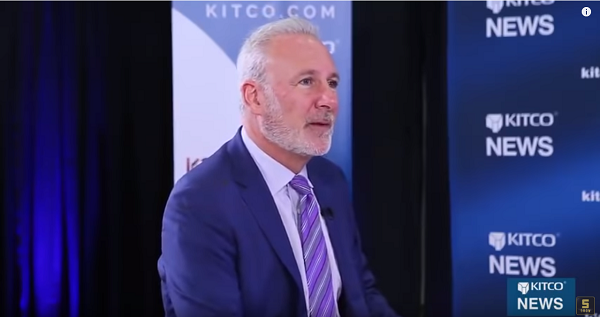The government shutdown apparently didn’t save Uncle Sam any money. The US Treasury Department said it will borrow about $8 billion more than originally estimated in the first quarter of 2019 as deficits continue to spiral upward.
According to new Treasury Department projections, the US government will issue $365 billion through credit markets in the January-March quarter. This stacks on top of the $426 billion borrowed through credit markets in the October-December quarter.
From the moment we enter the education system, we’re taught that government provides a benevolent hand that guides the economy and protects its citizens. For more than 50 years, Reason Magazine has been exposing the cracks in this narrative, contrasting the heavy hand of government with the beauty of free minds and free markets.
In this episode of It’s Your Dime, Mike Maharrey talks with Reason editor-at-large Nick Gillespie.
Stocks got a boost on Friday and gold rose 1.8% on further signs that the Federal Reserve is capitulating.
An article in the Wall Street Journal basically confirmed the Fed is now thinking about winding down its quantitative tightening program. As a CNBC headline put it, “The Fed may be moving closer to ending its rally-killing balance sheet reduction.” As Peter put it in a recent podcast, “The Federal Reserve is having to prematurely abort quantitative tightening, which is exactly what I said they were going to do before they shrunk the balance sheet by the first dollar.”
Not too long ago, it was on autopilot, they were just going to leave it alone and it was going to keep on going and then the market started to cave and then they change that to, well, we’re data dependent and now the market starts to go down a little bit more and all of a sudden we’re almost done. “
So, budgets are tight everywhere, right? Even at the Bank of England.
Well, that’s not altogether true. It would be more accurate to say the central bank wastes a lot of money. Some government functionary got wind of it and now there’s a scramble to tighten things up over at the BoE.
Said government functionary came up with one interesting solution that would actually generate a little revenue for the bank. But there was one tiny problem with the plan.
The SchiffGold Friday Gold Wrap podcast combines a succinct summary of the week’s precious metals news coupled with thoughtful analysis. You can subscribe to the podcast on iTunes.
Peter Schiff recently sat down with Daniela Cambone on Kitco News and talked about gold, the phony government shutdown, and his track record on economic forecasting.
China officially added gold to its reserves last month for the first time in two years. Meanwhile, the Chinese have been shrinking their holdings of US Treasuries. According to the Nikkei Asian Review, the moves are intended to reduce dependence on the US dollar.
According to data released by the People’s Bank of China, the country’s gold reserves totaled 1,862 tons at the end of 2018. That represents a 10-ton increase from the previous month and the first rise in the country’s hoard since June 2016.
Here’s another sign that the air is coming out of housing bubble 2.0.
Existing home sales fell 10.3% year-on-year in December. Sales, including single-family houses, townhouses, condos, and co-ops, dropped to a seasonally adjusted annual rate of 4.99 million homes, according to the National Association of Realtors. This ranks as the biggest year-over-year drop since May 2011 — in the midst of Housing Bust 1.0.
We often talk about the fatal conceit and hubris of central bankers who think they can micromanage a complex economy. Oftentimes, these monetary policymakers do things with the best of intentions, believing their actions will move the economy in the right direction. Sometimes, they do things just to benefit their buddies. Regardless of their motives, these actions have consequences.
The mechanizations of the Federal Reserve under Alan Greenspan along with other players in the US government in the 1990s blew up a massive “tech bubble” that eventually popped. Fed monetary in the wake of that collapse set the stage for the 2008 financial crisis. Fed monetary policy in the wake of that crisis set the stage for today.
In the following article, Peter Schmidt offers an overview of three moves Greenapsn made in the 1990s that helped fuel the mania that blew up the dot-com bubble. This look back in time offers us some valuable lessons for today.
Gold output in South Africa fell for the 14th straight month in November. According to Bloomberg, it ranks as the longest streak of monthly declines since 2012.
Production fell 14% from a year earlier, Pretoria-based Statistics South Africa said in a statement on its website last week.
South Africa once led the world in gold production. The precipitous drop in the country’s mine output over the last few years is expected to continue and could foreshadow a long-term trend of falling gold production globally.











